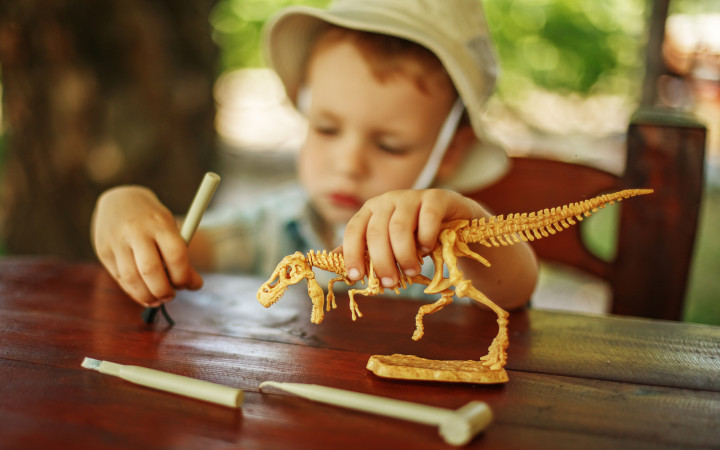Today’s Wonder of the Day was inspired by Christie from Maynard. Christie Wonders, “Who was Mary Anning? ” Thanks for WONDERing with us, Christie!
Do you have a favorite dinosaur? Many kids dream of coming face-to-face with a triceratops or T-Rex. Others hope to one day discover dinosaur bones below layers of dirt and dust. If this describes you, we know just the place for you to start: Jurassic Coast!
Is Jurassic Coast a place where you can still see real, live dinosaurs? Well, no. But you do have a good chance of finding dinosaur bones there. The cliffs of the Jurassic Coast in England have been a source of dinosaur skeletons for many years. In fact, one of history’s greatest fossilists spent a lot of her time digging there. Despite her amazing findings, many people haven’t heard of her. What was her name? Mary Anning!
Mary Anning was born in 1799 in Lyme Regis, a town that sits on the Jurassic Coast. She started fossil hunting with her father. But when he passed away in 1810, she started digging up fossils on her own. Sometimes, she had help from her brother, Joseph.
Young Anning would clean the fossils she found. Then she would sell them to help support her family. Many scientists bought her fossils to study them. Others bought the fossils and kept them in their personal collections or gave them to museums. Few people gave Anning much credit for her discoveries.
Still, Anning kept digging. Over the course of her lifetime, she discovered several species that had never been seen before. As a child, she helped unearth the first-ever Ichthyosaur. This was a large marine reptile. Anning went on to find several more Ichthyosaur skeletons.
Anning also found the first Plesiosaur, another marine reptile. It was this discovery that finally made people start giving her some credit for her work. In the later years of Anning’s life, many people visited Lyme Regis. They wanted to meet her and see her findings for themselves.
In 1828, Anning discovered another new creature. This time, the skeleton she dug up had wings. Anning had found was the first discovered Dimophodon. It was the first Pterosaur found outside of Germany.
Mary Anning even helped inspire a new art form. Her friend, Henry De la Beche painted the first piece of paleoart in 1830. It was inspired by her work. He named the painting “Duria Antiquior—A More Ancient Dorset.” He later sold prints of the work to help raise money for Anning.
The British Association for the Advancement of Science started paying Anning for her work in 1838. She was also rewarded by the Geological Society of London, though it didn’t offer her membership because she was a woman. In 1847, Mary Anning passed away. Today, she’s known as one of the first—and most successful—paleontologists in history.
Do you think there could be more dinosaurs out there? What could the yet-to-be-discovered creatures look like? If you’re interested in finding them, get to digging! Who knows what could be waiting just below the Earth’s surface!
Standards: NGSS.LS4.A, CCRA.R.4, CCRA.L.3, CCRA.L.6, CCRA.R.1, CCRA.R.2, CCRA.W.2, CCRA.W.9, CCRA.L1., CCRA.L.2, CCRA.W.3, CCRA.R.10, CCRA.SL.1




